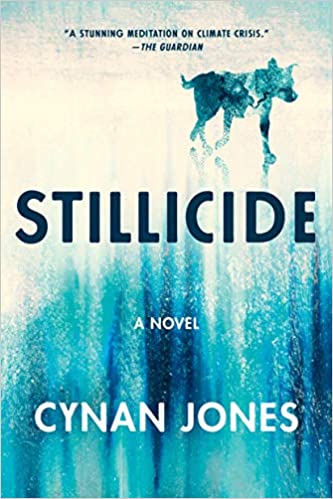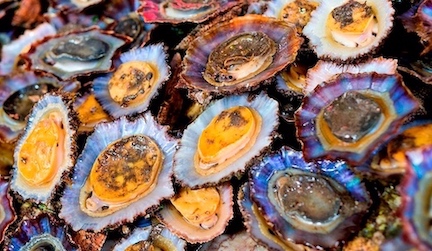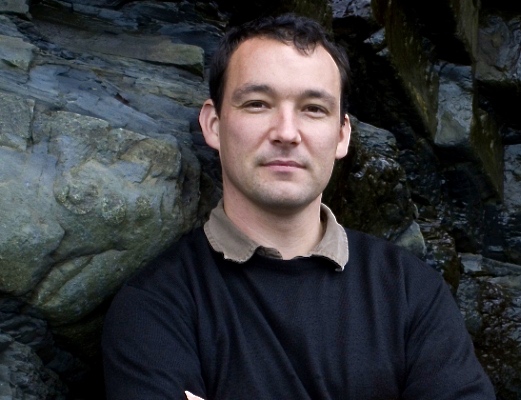“I look through the glass partition to the worker pool and can’t help thinking of slow dinosaurs. A cow-eyed herd, gathered placidly and chewing amongst low tree ferns with vegetarian stupidity. Every now and then someone reaches for a mug. Like they’re picking fruit, foraging amongst felty partitions in the sulphured air, their backs hunched over computers…”
 For Welsh author Cynan Jones, the comparison of this company’s workers to dinosaurs is not accidental. After all, he observes, “ninety-nine percent of species that have ever lived have gone extinct,” and it looks as if humans may now be on the list for the near future. Reminded of the “parasaurs,” he notes that they, too, “had rudimentary linguistics,” lived in herds within “a rigid social hierarchy,” and experienced “midway intelligence,” not unlike the future society in which Jones’s characters are living and working. Branner, who becomes Jones’s main character, uniting this novel through his actions in the beginning and ending, is a former soldier, employed as a police guardian on the railway working to transport ten million gallons of water to the city, while traveling at two hundred miles per hour. On duty as the novel opens, Branner, who has been pre-occupied, sees a red warning light which has suddenly appeared on his scanner. His duty tells him to shoot immediately to protect the community’s much needed water supply, but his wife is seriously ill at home and possibly facing imminent death. He is so depressed by these thoughts of her that he is wondering whether to shoot the enemy or let the army kill him as an unidentified trespasser. He thinks the red dot might possibly be a muntjac, a kind of deer which people grill and eat, but he’s not sure – and so he delays till the last minute his decision on whether to shoot toward the red light or let the army end his sadness.
For Welsh author Cynan Jones, the comparison of this company’s workers to dinosaurs is not accidental. After all, he observes, “ninety-nine percent of species that have ever lived have gone extinct,” and it looks as if humans may now be on the list for the near future. Reminded of the “parasaurs,” he notes that they, too, “had rudimentary linguistics,” lived in herds within “a rigid social hierarchy,” and experienced “midway intelligence,” not unlike the future society in which Jones’s characters are living and working. Branner, who becomes Jones’s main character, uniting this novel through his actions in the beginning and ending, is a former soldier, employed as a police guardian on the railway working to transport ten million gallons of water to the city, while traveling at two hundred miles per hour. On duty as the novel opens, Branner, who has been pre-occupied, sees a red warning light which has suddenly appeared on his scanner. His duty tells him to shoot immediately to protect the community’s much needed water supply, but his wife is seriously ill at home and possibly facing imminent death. He is so depressed by these thoughts of her that he is wondering whether to shoot the enemy or let the army kill him as an unidentified trespasser. He thinks the red dot might possibly be a muntjac, a kind of deer which people grill and eat, but he’s not sure – and so he delays till the last minute his decision on whether to shoot toward the red light or let the army end his sadness.
Eleven additional episodes, featuring new and often overlapping characters, follow, in which the humans who live in this future society reveal their own lives. In the second episode, the community is in the process of attempting to help solve the water crisis by dragging a large chunk of iceberg all the way from the Arctic to the city to provide water, but they will need to demolish many homes in order to get it to the Dock. Public protests against the demolitions are frequent. One family is now in crisis because their home is one of those about to be demolished to make way for “stillicide channels.” These channels will carry some of the melting water from the iceberg along a tow-track from the ocean to its Dock, thereby saving water. Fortunately, the speaker in this episode is living with a woman who has a child, Hillie, whose imagination sometimes provides a break in the misery which has begun dominating their everyday lives. Sometimes little Hillie pretends the city is a great old-fashioned ocean liner sailing through the sea, and sometimes she makes paper flowers, perhaps similar to their cactus flowers, to give away to friends. Ultimately, the speaker imagines the family selling their flowers and filling the city with blooms, or maybe planting flowers in the cracks of the curbs as the new Ice Berg project gets underway.
Despite the Water Train and the Ice Berg project, some of the residents are still lovers of nature, eating limpets, collecting their intriguing shells, and going to the beach and admiring the baby sand martins, whose very lives are challenged. Some scientists have claimed that the holes the sand martins make in the cliffs as they are nesting contribute to erosion, while others have pulled down nets the council has put up to try to stop that erosion. “There was a whole ocean to hold back, but they opted to stop the half-ounce birds,” one remarks drily. Another couple is deciding whether to accept the government relocation money along the beach, especially in view of the attacks down the line. Although the old bandstand has gone into the ocean because of the rising tides, ancient artifacts are appearing, and one man has discovered a Bronze Age brooch which he gives to one of the women. Still, the displacement of residents is a major issue, and controversy keeps caring residents busy, concerned that while icebergs “have been effective in supplying smaller cities [with water] on a more modest scale,” that the current supply is not enough. “Ultimately, we’re animals,” one says. And animals find ways.” Some additional viewpoints appear from a corporate executive, a journalist, a nurse, and a professor to broaden the scope.
As the circumstances in the community change rapidly, with hostilities and enmities growing, Branner re-enters in the conclusion to provide a human touch which every reader will identify with, even amidst the serious environmental problems. Love re-enters the picture, and homey details, such as making ice cream, and a little boy falling in love with a stray dog, receive some attention, even as the community attempts to capture a “calf” (a small iceberg) and conduct an experiment with catching fish. As the novel returns to Banner, his sick wife, and the future they face, all the speculation regarding the future is placed into perspective, providing an emotional and thought-provoking ending. As Banner faces a horrific choice regarding the Water Train, the reader faces it with him.
Cynan Jones writes with such great care for his readers that this futuristic, experimental novel is totally human. Even readers who do not usually like or read this genre will probably be thrilled by this work for its exciting and often new ideas, and the author’s ability to share his own attitudes without being ponderous. Though he includes many characters whose presence broadens the scope and creates interest before they disappear from the story, the feelings they reveal in relation to the themes add dramatically to the novel. Though the novel has some intense descriptions (as appear in the review’s opening quotation), it can also be gritty and plainspoken when the author needs to get a point across. Themes are clear without being polemical, and most, if not all, of Jones’s readers will clearly understand the points he is making, even when his style and narrative pattern vary widely from the norm. On a personal note, I am not a fan of futuristic novels, but I totally enjoyed this book and feel as if Cynan Jones and his novels will quickly become All-Time literary favorites. This novel is at the top of my Favorites for this year.
ALSO by Jones: COVE
Photos. The cactus flowers which Ruth enjoys are found at https://pixels.com
The limpets in their colorful shells are from https://www.azoreslovers.com
The baby sand martins appear on https://www.woodlandtrust.org.uk
The Cynan Jones photo is found on https://lithub.com
A muntjac, a form of deer sometimes eaten for food, is from https://www.lazoo.org





